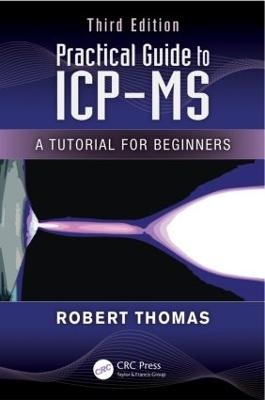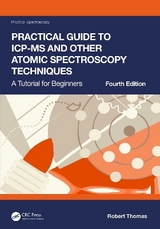
Practical Guide to ICP-MS
Crc Press Inc (Verlag)
978-1-4665-5543-3 (ISBN)
- Titel erscheint in neuer Auflage
- Artikel merken
New to the third edition:
New chapter: Emerging ICP-MS Application Areas – covers the three most rapidly growing areas: analysis of flue gas desulfurization wastewaters, fully automated analysis of seawater samples using online chemistry procedures, and characterization of engineered nanoparticles
Discussion of all the new technology commercialized since the second edition.
An updated glossary of terms with more than 100 new entries
Examination of nonstandard sampling accessories, which are important for enhancing the practical capabilities of ICP-MS
Insight into additional applications in the environmental, clinical/biomedical, and food chemistry fields as well as new directives from the United States Pharmacopeia (USP) on determining impurities in pharmaceuticals and dietary supplements using Chapters <232>, <233> and <2232>
Description of the most important analytical factors for selecting an ICP-MS system, taking into consideration more recent application demands
This reference describes the principles and application benefits of ICP-MS in a clear manner for laboratory managers, analytical chemists, and technicians who have limited knowledge of the technique. In addition, it offers much-needed guidance on how best to evaluate capabilities and compare with other trace element techniques when looking to purchase commercial ICP-MS instrumentation.
Robert J. Thomas, GRIC, FRSC is principal of Scientific Solutions, a consulting company based in Gaithersburg, Maryland, that serves the application, training, and technical writing needs of the trace element analysis user community. He has worked in the field of atomic spectroscopy (AS) for almost 40 years, with over 20 years’ experience in ICP-MS applications, product development, and sales and marketing support at Perkin Elmer Instruments, Inc. He has written more than 80 technical publications covering a wide variety of atomic spectroscopic subject matter, from the fundamental principles of the technique, to articles solving real-world application problems with AA, ICP-OES, and ICP-MS analytical instrumentation.
An Overview of ICP-MS. Principles of Ion Formation. Sample Introduction. Plasma Source. Interface Region. Ion-Focusing System. Mass Analyzers: Quadrupole Technology. Mass Analyzers: Double-Focusing Magnetic Sector Technology. Mass Analyzers: Time-of-Flight Technology. Mass Analyzers: Collision/Reaction Cell and Interface Technology. Ion Detectors. Peak Measurement Protocol. Methods of Quantitation. Review of Interferences. Sample Preparation. Routine Maintenance. Alternative Sample Introduction Techniques. Coupling ICP-MS with Chromatographic Techniques for Trace Element Speciation. Common ICP-MS Applications. Emerging ICP-MS Application Areas. Comparing ICP-MS with Other Atomic Spectroscopic Techniques. How to Select an ICP Mass Spectrometer: Some Important Analytical Considerations. Final Thoughts. Useful Contact Information. Glossary of ICP-MS Terms. References. Index.
| Erscheint lt. Verlag | 5.6.2013 |
|---|---|
| Reihe/Serie | Practical Spectroscopy |
| Zusatzinfo | 63 Tables, black and white; 168 Illustrations, black and white |
| Verlagsort | Bosa Roca |
| Sprache | englisch |
| Maße | 156 x 234 mm |
| Gewicht | 1320 g |
| Themenwelt | Naturwissenschaften ► Chemie ► Analytische Chemie |
| ISBN-10 | 1-4665-5543-2 / 1466555432 |
| ISBN-13 | 978-1-4665-5543-3 / 9781466555433 |
| Zustand | Neuware |
| Haben Sie eine Frage zum Produkt? |
aus dem Bereich



